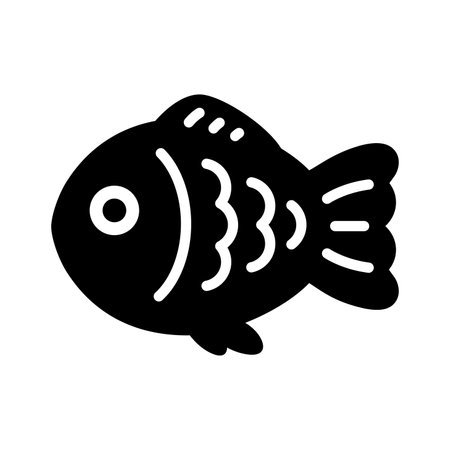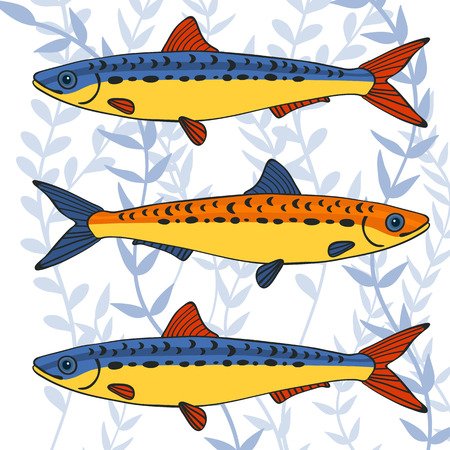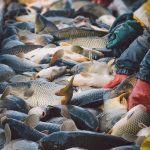1. Understanding Smallmouth Bass Behavior
To consistently catch smallmouth bass, it’s essential to first understand how they behave throughout the year. Smallmouths are known for their aggressive strikes and hard fights, but they can also be finicky depending on water temperature, season, and available food sources.
Unique Traits of Smallmouth Bass
Smallmouth bass, often called “bronze backs,” are a favorite among anglers for their spirited fight and acrobatic jumps. Unlike largemouth bass, smallmouths prefer cooler, clearer water and are more likely to be found around rocks, gravel, and current. They’re visual feeders with excellent eyesight, which makes them more responsive to realistic presentations in clear water conditions.
Preferred Habitat by Season
Understanding where smallmouths like to hang out during each season helps narrow down your search on the water. Heres a quick guide:
| Season | Preferred Habitat | Water Temperature Range (°F) |
|---|---|---|
| Spring (Pre-spawn) | Shallow flats near spawning areas with gravel or rock bottom | 50–60°F |
| Spring (Spawn) | Shallow bays and coves with moderate cover | 58–65°F |
| Summer | Deeper rocky points, ledges, and drop-offs; near current or thermoclines in lakes | 65–75°F |
| Fall | Main lake points, river mouths, and chasing baitfish in open water | 55–65°F |
| Winter | Deep pools in rivers or the deepest parts of lakes with slow current | 35–45°F |
Feeding Patterns and Key Forage
Smallmouth bass diets vary depending on location and season, but theyre opportunistic feeders that target whats most available. Their primary forage includes:
- Crawfish: A top choice in rocky environments — especially during spring and early summer.
- Baitfish: Shad, alewives, smelt, or perch — key during summer and fall when bass school up and chase moving prey.
- Aquatic insects: Especially important for river smallmouth or in clear northern waters.
- Nymphs and larvae: Found in colder water or early spring when other food is scarce.
Bass Feeding Activity by Water Temperature
| Water Temperature (°F) | Bass Activity Level | Tactics to Consider |
|---|---|---|
| <45°F | Very slow; low metabolism and feeding interest | Suspend baits slowly; use finesse presentations like hair jigs or tubes |
| 50–60°F | Picks up around pre-spawn; active feeding begins again after winter slowdown | Crawfish imitators like jigs or creature baits work well near bottom structures |
| 65–75°F | Peak activity; aggressive feeding especially early morning or late evening | Crankbaits, spinnerbaits, topwaters — match local forage patterns for best results |
| >80°F (in rare warm conditions) | Might move deeper; activity slows midday due to heat stress | Fish deeper with drop shot rigs or slow-moving plastics along structure breaks |
The Takeaway on Behavior Patterns
The more you tune into seasonal changes and habitat preferences of smallmouth bass, the better you’ll become at predicting where they’ll be and what they’ll bite. Whether youre fishing rivers or lakes, understanding these behavior cues is your first step toward mastering smallmouth bass fishing year-round.
2. Spring Strategies: Capitalizing on the Spawn
Spring is one of the most exciting times of year for smallmouth bass fishing. As water temperatures rise into the mid-50s to low 60s (°F), smallmouth begin moving into shallow flats, gravel banks, and rocky shorelines to spawn. This seasonal behavior makes them easier to locate and more aggressive, giving anglers a perfect opportunity to catch trophy-sized fish.
Locating Spawning Beds
During the spring spawn, smallmouth bass build beds in 3 to 10 feet of clear water. Look for areas with hard bottom—gravel, sand, or chunk rock—and good sunlight penetration. Use polarized sunglasses to spot the circular beds and cruising fish. Smallmouth are territorial during this time and will aggressively guard their nests against intruders.
Key Spots to Target:
| Location Type | Description |
|---|---|
| Gravel Flats | Preferred spawning area due to stable bottom structure. |
| Rocky Shorelines | Hold heat well and offer protection from predators. |
| Secondary Points | Transition zones where fish stage before spawning. |
Using Finesse Tactics
When targeting bedding smallmouth, subtle presentations are often more effective than power fishing techniques. Drop shots, Ned rigs, and wacky-rigged soft plastics allow you to keep your bait in the strike zone longer without spooking the fish. Cast beyond the bed and slowly drag or hop your bait into the center of it.
Popular Finesse Rigs:
- Drop Shot: Ideal for precise placement near beds.
- Ned Rig: Small profile mimics natural prey like gobies or craws.
- Tubes: Classic smallmouth bait that imitates crayfish.
Choosing the Right Lures for Aggressive Strikes
If youre dealing with especially aggressive fish, dont be afraid to switch it up with reaction baits. A suspending jerkbait or a small swimbait can trigger territorial strikes even if bass arent feeding. Bright colors like chartreuse or white can provoke a defensive response around beds.
Bait Selection Guide:
| Lure Type | Best Conditions | Recommended Colors |
|---|---|---|
| Ned Rig | Clear water, finicky bass | Green pumpkin, watermelon red |
| Tube Bait | Mimic crayfish in rocky areas | Crawdad, brown/purple flake |
| Suspending Jerkbait | Aggressive fish guarding beds | White, chartreuse shad |
The spring spawn is all about observation and patience. Watch how fish react to different presentations and adjust your tactics accordingly. Whether youre sight fishing or blind casting likely bedding areas, understanding smallmouth behavior during this season is key to hooking more fish and having memorable days on the water.

3. Summer Tactics for Clear Waters and Deep Structures
When summer heats up, smallmouth bass behavior changes with the rising water temperatures. In clear lakes and reservoirs, these bronze battlers often move deeper and seek out cooler, oxygen-rich zones near underwater structures like rock piles, ledges, and drop-offs. Understanding how to adapt your approach during this season is key to consistent success.
Finding Smallies in the Heat
During the summer months, smallmouths are less likely to roam shallow flats unless it’s early morning or late evening. Midday sun drives them deeper, so focus your efforts on areas with structure between 15 to 30 feet deep. Use your fish finder to locate:
- Rock piles
- Sunken points
- Ledges and drop-offs
- Boulder fields
Best Times to Fish
| Time of Day | Recommended Techniques |
|---|---|
| Early Morning (Sunrise – 9 AM) | Topwater lures near shallow rocks or weed edges |
| Midday (10 AM – 4 PM) | Deep crankbaits, drop shot rigs around structure |
| Evening (5 PM – Dusk) | Poppers and walking baits near surface structure |
Using Fast-Moving Baits Effectively
When smallies are aggressive, fast-moving baits can trigger reaction strikes. Try these options in clear summer waters:
- Crankbaits: Use medium- to deep-diving models that mimic baitfish.
- Spinnerbaits: Work well around submerged brush or rocky points.
- Swimbaits: A steady retrieve mimics fleeing prey.
Topwater Techniques That Deliver
Nothing beats a topwater blow-up during a calm morning or evening. Choose lures based on water clarity and fish activity:
- Poppers: Great for still water; pop-pause-pop rhythm works best.
- Walking baits: Like the Zara Spook; ideal for covering large flats quickly.
- Buzzbaits: Excellent for drawing attention across weedy or rocky surfaces.
Tackle Tips for Summer Success
| Lure Type | Rod Setup | Main Line Recommendation |
|---|---|---|
| Dropshot Rig | Medium-light spinning rod, fast action tip | 6–8 lb fluorocarbon line |
| Crankbait | Medium power casting rod, moderate action | 10–12 lb monofilament or fluorocarbon |
| Topwater Lure | Medium-heavy rod with a fast tip | Braided line (30 lb) with mono leader if needed |
The key to summer smallmouth fishing is staying mobile and adjusting based on depth, light conditions, and fish activity. Keep experimenting until you find what triggers bites—and when you do, hang on tight!
4. Fall Feeding Frenzy: Triggering Aggressive Bites
As the leaves start to change and water temperatures begin to drop, smallmouth bass kick into high gear. Fall is prime time for anglers because bass enter a feeding frenzy to bulk up before winter. Understanding their behavior and knowing how to mimic their natural prey can lead to some of the most exciting fishing action of the year.
Why Fall Is a Game-Changer
During the fall, smallmouth bass become more aggressive and actively chase down baitfish like shad, alewives, and minnows. The cooler water temps increase oxygen levels and stimulate metabolism, making them more willing to strike fast-moving lures. They often school up in transitional zones—areas where shallow flats drop into deeper water—which are perfect ambush spots for hunting prey.
Transitional Zones: Where to Find Fall Smallmouth
Focus your efforts on areas that offer quick access to both shallow and deep water. These include:
- Rocky points
- Main lake humps
- Mouths of creeks or coves
- Drop-offs near flats
Smallmouth will use these areas to pin baitfish against structure, making it easier for them to feed—and for you to catch them.
Mimicking Baitfish: Lure Selection Tips
To trigger strikes during the fall feeding frenzy, your goal should be to imitate the movement and appearance of real baitfish. Use reaction baits that cover water quickly and provoke instinctual bites. Here’s a quick guide to effective fall lures:
| Lure Type | Best Use | Tips |
|---|---|---|
| Crankbaits (shad or silver color) | Casting over points and drop-offs | Use medium-to-deep divers depending on depth changes |
| Spinnerbaits | Windy days or stained water | Slow-roll along structure or burn it across flats |
| Swimbaits (soft plastic) | Clear water conditions | Mimic injured baitfish with a slow, steady retrieve |
| Jerkbaits | Suspend in mid-depth zones | Twitch-pause-twitch method mimics fleeing baitfish |
| Lipless crankbaits | Covering large areas quickly | Use yo-yo retrieve near rocky bottoms or weed edges |
Reaction Strikes: Speed Can Be Key
This season is all about triggering reaction strikes. That means presenting your lure in a way that forces bass to make a split-second decision. Speed up your retrieves slightly, add erratic action, or bounce your lure off rocks and structure to provoke aggressive hits.
Pro Tip:
If you spot schooling baitfish on your electronics, cast past the school and bring your lure through it. This simulates a lone baitfish getting separated from the group—an easy target for hungry smallmouth.
Tackle Recommendations for Fall Fishing
| Gear Component | Recommended Setup |
|---|---|
| Rod | Medium or medium-heavy power, fast action spinning or baitcasting rod (66″–7) |
| Reel | High-speed reel (6.2:1 or higher) for quick retrieves and covering water fast |
| Main Line | Braided line (20–30 lb) with fluorocarbon leader (10–12 lb) for sensitivity and stealth in clear water |
| Lure Color Palette | Natural baitfish colors like silver, white, chartreuse, and translucent patterns depending on water clarity |
The Takeaway on Fall Tactics
The fall season offers one of the best chances all year to catch trophy smallmouth bass. By focusing on transitional zones, mimicking baitfish with reaction-style lures, and speeding up your presentations, youll be able to tap into the aggressive feeding behavior that defines this season. So grab your gear, find those schools of baitfish, and get ready for some serious action.
5. Winter Patterns and Cold Water Techniques
When the water temperatures drop and smallmouth bass slow down, winter fishing becomes all about finesse, patience, and understanding where these fish hunker down during the cold months. While it may seem like a tough time to catch bass, winter can actually be incredibly rewarding if you know how to adjust your approach.
Understanding Winter Behavior
In winter, smallmouth bass become sluggish as their metabolism slows with the cold water. Theyre less likely to chase fast-moving lures and instead prefer baits that stay in their strike zone longer. The key is finding their winter hangouts and presenting your lure slowly and naturally.
Finding Winter Holding Spots
Smallmouths seek out deeper, more stable environments during winter. Look for these types of locations:
| Winter Holding Spot | Description |
|---|---|
| Deep Rock Piles | Rocks retain heat and offer cover; smallmouths often stack up here. |
| Main Lake Points | Transition areas from shallow to deep water—perfect ambush points. |
| Channel Ledges | Subtle depth changes along creek channels draw inactive bass. |
| Bluff Walls | Steep drop-offs provide quick access to various depths. |
Cold Water Bait Selection and Presentation
The name of the game in winter is “slow and subtle.” Choose baits that match the seasons mood—natural colors, minimal action, and long pauses between movements.
| Bait Type | Best Use | Tips |
|---|---|---|
| Blade Baits | Vertical jigging in deep water | Let it flutter on the fall; short hops are best. |
| Ned Rigs | Crawling along rocky bottoms | Use light line and let the bait sit still for long periods. |
| Spoon Jigs | Targeting suspended fish or bottom dwellers | A gentle lift-and-drop action works wonders in cold water. |
| Suspending Jerkbaits | Covering mid-depth structures slowly | Twitch-twitch-pause… then wait even longer than you think! |
Tuning Your Gear for Cold Conditions
Line Selection
Go with lighter fluorocarbon lines (6-10 lb test) for better sensitivity and less visibility in clear winter waters. Fluorocarbon also sinks, helping get your bait into the strike zone quicker.
Rod & Reel Setup
| Gear Component | Recommended Spec | Reason |
|---|---|---|
| Rod Action | Medium-light to medium-fast spinning rod (6’6”–7’) | Sensitive enough for light bites but strong enough for hooksets. |
| Reel Size | 2500–3000 series spinning reel | Smooth drag system is essential when using light line. |
The Power of Patience
The biggest challenge of winter smallmouth fishing is slowing yourself down. You might go long stretches without a bite, but once you find them, they tend to school tightly. Focus on working each area thoroughly before moving on. Remember: when it’s cold, less is more!
Pro Tip:
If youre marking fish on your electronics but not getting bites, try downsizing your presentation or increasing your pause time. Sometimes just letting a bait sit motionless can trigger a strike from an otherwise uninterested bass.


